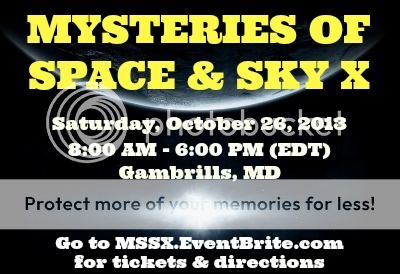Craig Woolheater from Cryptomundo posted this video:
REAL Woolly MAMMOTH (Mammuthus primigenius) sighting or cut / paste http://www.youtube.com/watch?v=w7T6vK3TEQE#t=80
REAL Woolly MAMMOTH (Mammuthus primigenius) sighting (Yakutsk city, Sakha Republic, Siberia 1943).
After the conclusion of the WW2 Battle of Stalingrad, Nazi Party member and official photographer for the NSDAP, Holger Hildebrand, was captured by the Red Army at the Battle of Stalingrad. He and thousands of other Wehrmacht soldiers were later sent on a death march towards Siberia; this mammoth footage is understood to have been taken during that journey. (Hildebrand is believed to have died a prisoner of war at a Soviet forced labor camp in late 1945. His Granddaughter later came into possession of the footage when his belongings were repatriated to Germany from Russia decades after his death.) - WeirdWildSpooky
Many of us remember the Wooly Mammoth Crossing Siberian River (http://www.youtube.com/watch?v=mM6azIwmfAY) hoax video that caused a stir a year or so ago. Woolly Mammoth? Yeah...Right
Then there is the research underway to possibly resurrect the extinct mammal from a preserved carcass:
Woolly mammoth DNA may lead to a resurrection of the ancient beast
Technical and ethical challenges abound after first hurdle of taking cells from millennia-old bodies is cleared
The pioneering scientist who created Dolly the sheep has outlined how cells plucked from frozen woolly mammoth carcasses might one day help resurrect the ancient beasts.
The notional procedure – bringing with it echoes of the Jurassic Park films – was spelled out by Sir Ian Wilmut, the Edinburgh-based stem-cell scientist, whose team unveiled Dolly as the world's first cloned mammal in 1996.
Though it is unlikely that a mammoth could be cloned in the same way as Dolly, more modern techniques that convert tissue cells into stem cells could potentially achieve the feat, Wilmut says in an article today for the academic journalism website, The Conversation.
"I've always been very sceptical about the whole idea, but it dawned on me that if you could clear the first hurdle of getting viable cells from mammoths, you might be able to do something useful and interesting," Wilmut told the Guardian.
"I think it should be done as long as we can provide great care for the animal. If there are reasonable prospects of them being healthy, we should do it. We can learn a lot about them," he added.
Woolly mammoths roamed the Earth tens of thousands of years ago in a period called the late Pleistocene. Their numbers began to fall in North America and on mainland Eurasia about 10,000 years ago. Some lived on for a further 6,000 years. Their demise was likely the result of hunting and environmental change.
The prospect of raising woolly mammoths from the dead has gathered pace in recent years as the number of frozen bodies recovered from the Siberian permafrost has soared. The rise comes because the ice is melting, but also because of awareness in the region that there is money in the ancient remains.
Earlier this month, the most complete woolly mammoth carcass ever recovered from Russia was unveiled at an exhibition in Yokohama, Japan. The baby female, nicknamed Yuka, lived about 39,000 years ago, and is remarkable for the preservation of her fur and soft tissues, such as muscle.
Samples from Yuka have been sent to the laboratory of Hwang Woo-suk, the disgraced South Korean stem cell scientist, who, with Russian researchers, hopes to clone the mammoth.
Though Wilmut does not doubt the sincerity of the scientists hoping to clone woolly mammoths with the Dolly technique, he said the idea was "wildly optimistic" because the technical challenges were so tough.
In his article for The Conversation, Wilmut explains the formidable hurdles that stand in the way of scientists who want to clone the beasts. The technique requires scores of healthy mammoth cells and hundreds or thousands of eggs from a closely related species, such as the Asian elephant.
The most immediate problem is that mammoth cells must survive with their DNA intact. In practice, they degenerate quickly at the temperature of melting snow and ice, when most remains are found.
"By the time you've got a bone sticking up in the sunshine, it's effectively too late. You need to get it straight out of the deep freeze, as it were," Wilmut said.
Another problem is that cloning needs a female of a closely related species to provide eggs and to carry the pregnancy achieved with any cloned embryo. The closest living relatives to mammoths are elephants, but these are not plentiful enough to collect eggs from.
"Because there is a danger of elephants becoming extinct, it is clearly not appropriate to try to obtain 500 eggs from elephants," Wilmut writes.
There is an alternative, though. If good-quality cells can be extracted from mammoth remains – and that is a big if – they could be reprogrammed into stem cells using modern procedures. These could then be turned into other kinds of cell, including sperm and eggs. Mice have already been born from sperm and eggs made from stem cells.
"If the cells were from a female, this might provide an alternative source of eggs for use in research, and perhaps in breeding, including the cloning of mammoths.
"From a male they would be sperm, and they might be able to fertilise eggs to produce a new mammoth embryo," Wilmut writes.
But the scientist, who in many peers' eyes should have shared the Nobel prize in physiology or medicine with Sir John Gurdon and Shinya Yamanaka last year, said it could be 50 years before the techniques for resurrecting the woolly mammoth were perfected. There will be no Pleistocene Park soon.
That gives time for scientists to work out some of other problems that would arise if a mammoth were ever born again.
One concern is that the mammoth would be adapted to frigid conditions while its mother would be used to a hot, dry climate.
Another problem is that one will not be enough. "Ideally, and before too long, you need to provide them with friends and neighbours to interact with," Wilmut said. "The whole issue is what are the effects on the animal's welfare."
None of it will happen unless scientists can pluck good-quality cells from carcasses that have lain in the ice for thousands of years. Will it ever happen? "I would say it's fairly unlikely, but the world is full of surprises," Wilmut said. - The Guardian
NOTE: While unlikely at present, the development of some form of mammoth or hybrid might be possible in the long-term, leading to major biological discoveries and advances. But I suppose the biggest question is...should we do it? And what will the science lead to? Lon
'Resurrection' of Some Extinct Species Now Likely - June 2009
Ancient Cattle To Be Bred Back From Extinction - January 2010
Preserved Ice Age Mammoth Found With Flowing Blood...Are We Closer To Cloning? - May 2013
Mammoth: The Resurrection Of An Ice Age Giant
Cloning: Responsible Science or Technomadness? (Contemporary Issues)
After Dolly: The Promise and Perils of Cloning
UPDATE: I received the following information on the video:
The footage is taken from episode 6 'Mammoth Journey' of the 2001 BBC documentary 'Walking With Beasts'. The hoaxer flipped the image horizontally, desaturated it, overlaid it with a few filters and cropped it fairly tightly but if you skip to 19:00 in this youtube clip you'll see the "WW2 mammoth" front and center:
http://www.youtube.com/watch?v=ShfX7_ktZX4
Thanks to DB!

Join Eric Altman, Lon Strickler and Sean Forker
each Sunday at 8 PM ET as we go
Beyond the Edge!
Call toll free 1-877-677-2858 during the live broadcast
----------
Tune in each week for a new and exciting podcast

Announcements, videos, discussion, etc. coming your way!


Click ad to order tickets and for directions



"The latest news from beyond the mainstream"
Join Ben & Aaron for their weekly podcasts!
Check out Mysterious Universe Plus+ all access format!


Click to submit a sighting report or encounter


Free shipping - Bonded dealer - PCI certified




'Phantoms & Monsters: Cryptid Encounters'
Don't have a Kindle device? No problem...
Free Reading Apps: Your Kindle purchase can be sent automatically to your Android, iPad, iPhone, PC, Mac, BlackBerry, or Windows Phone 7 device.
DOWNLOAD A 'FREE APP' HERE!



